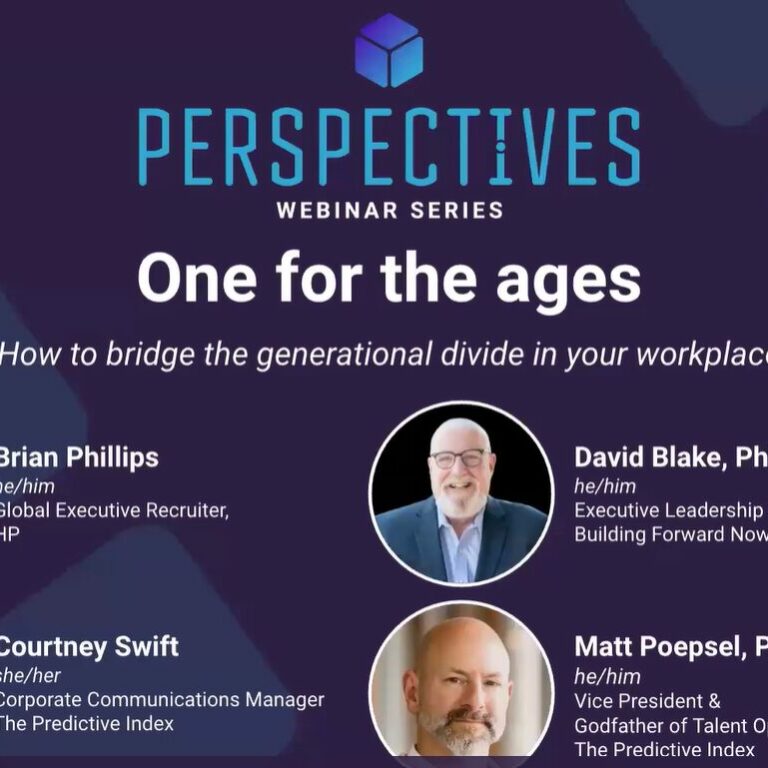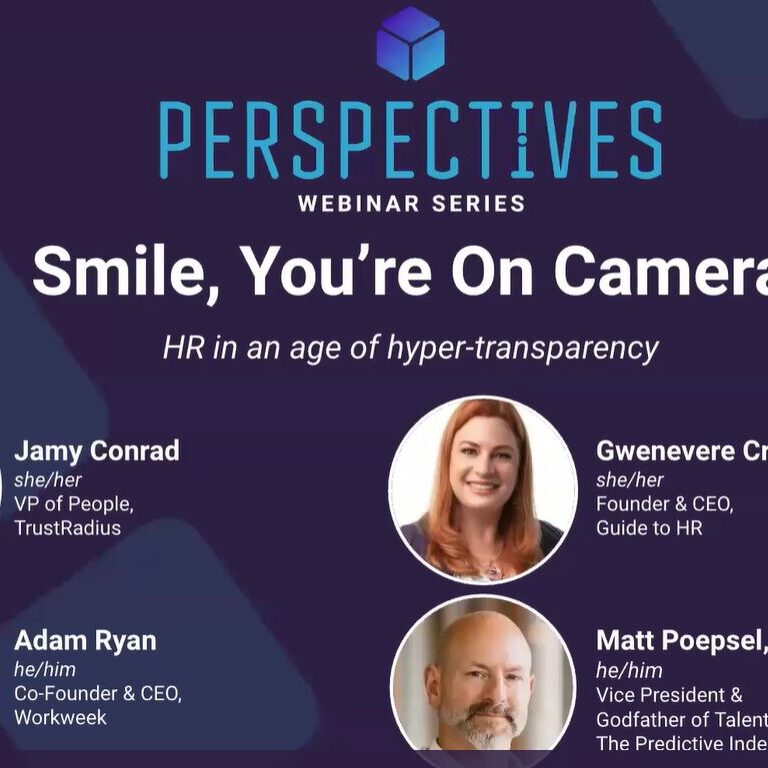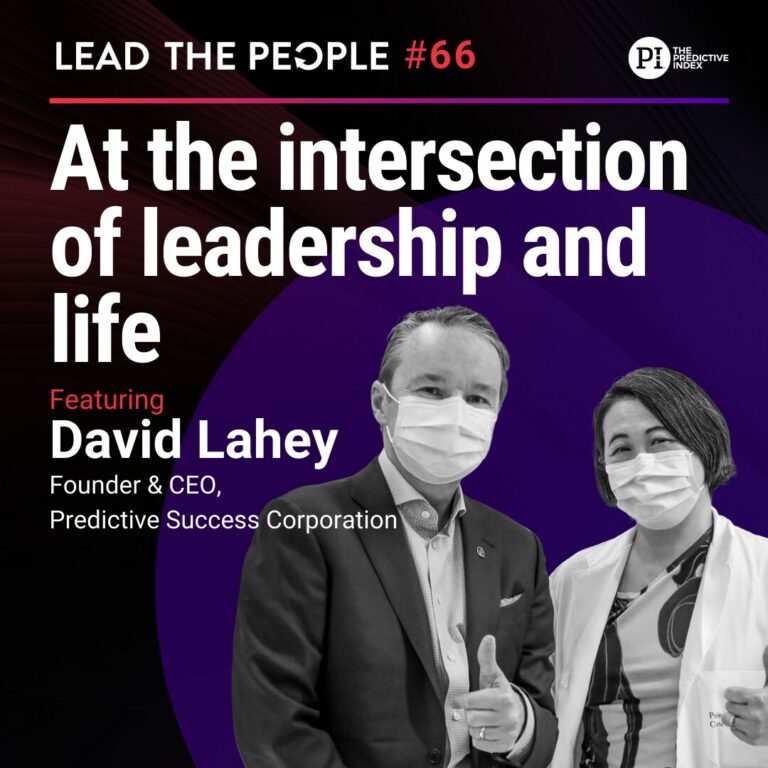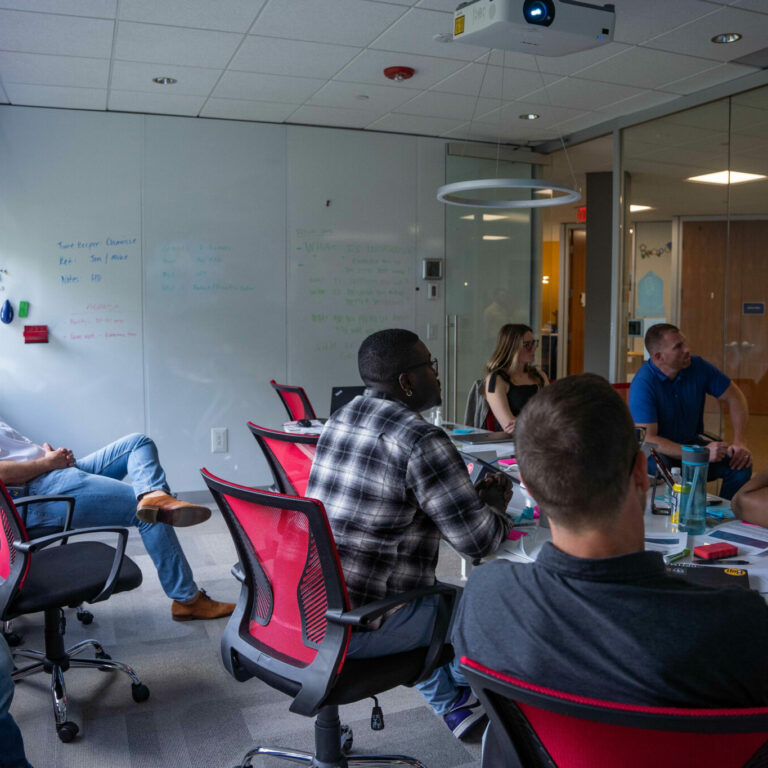
Bridge to a better tomorrow
Too often, well-intentioned leaders overlook all the elements needed to shepherd workers safely and happily from one side of the bridge to the other.

Too often, well-intentioned leaders overlook all the elements needed to shepherd workers safely and happily from one side of the bridge to the other.

For the May episode of our Perspectives webinar series, we decided to tackle the topic of optimizing a multigenerational workforce.

I’ve created this simple worksheet to help you recall all that you give and all that you receive when it comes to your work. Complete it for yourself to rekindle your relationship with your workplace. Then share it with your team members to help them do the same.

I’m helping you hit the pause button and reflect on how you approach your work in this handy worksheet. It invites you to consider your favorite examples of technology, tools, templates, training, and transparency—5 Ts—that help you perform and lead at your best.

Who belongs on the leadership equivalent of Mount Rushmore?Because leadership is a highly individualized practice, there’s no wrong answer. The most important answer is your own.

Transparency has become a hot topic for employers and employees alike. For this month’s episode of the Perspectives webinar series powered by The Predictive Index, we decided to set our sights on the transparency topic.

In project management circles, a RACI chart offers help. This acronym stands for Responsible, Accountable, Informed, and Consulted. These are the roles assigned to a given individual or group (in the case of C and I) for each required deliverable or activity.

Think about the trajectory of our professional development. We’re often so caught up in today’s pressing demands that we lose a bit of perspective. My “memory lane” experience was fresh in my mind during a recent mentorship conversation.

Tune into the Lead The People podcast for a heart wrenching cancer survival story, and learn about its profound impact on one oncologist’s communication at work.

Modern work is complex, and tension can run high within organizations. Identifying opposing forces brings us closer to helping ourselves navigate these situations effectively.

Leadership is complex. Rather than complain about what’s not working, we wanted to turn our attention to how we can help leaders at every level get it right.

Recognition makes employees feel a heightened sense of belonging and value. It costs almost nothing, but it can be priceless in terms of the morale and motivation it can produce. And it isn’t reserved for manager-to-direct reporting relationships.

In our work, we experience a variety of conditions that can produce a range of outcomes. This can happen when our activity level, focus, stimulation, or other factors are too much, too little, or just right.

With the rise of remote and hybrid workplaces, along with the growing share of employees demanding deeper connections, greater recognition, and a sense of shared purpose from their job than ever before, more organizations are realizing the value and importance of the simple one-on-one.

I’ve been leading people in organizations large and small for some 30 years. Not once has anybody inspected my leadership abilities using a formalized checklist. What would such a checklist even measure?